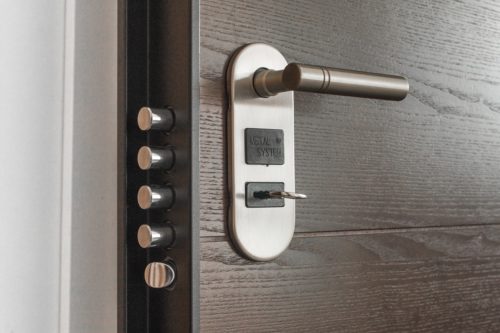
Investing in a vacation home is a wonderful luxury to have. While you may escape to your home-away-from-home as much as possible, what happens to the dwelling when you’re not around? Similar to how you secure your primary home, you also need to ensure the safety of your vacation home with the following tips.
Ditch the Spare Keys
Whether it’s left under the door mat, inside a fake rock or other popular hiding spots, one of the most serious mistakes vacation homeowners make is leaving a spare key outdoors. It may seem like the perfect idea having a spare handy in case you’re locked out of your vacation home, but it can be an invitation to intruders to easily enter your home. A better security option is to leave a key with a nearby neighbor or friend you trust. Smart phone devices such as a remote door lock is a great tech feature for your vacation home. By simply entering a code or fingerprint, you can access your house immediately without the need for a key. You can also download the app that comes with your system and lock or open your doors from anywhere.
Video Surveillance
These 6 vacation home safety tips use today’s latest technological advances to monitor doors, windows and the inside of a dwelling. Setting up cameras outdoors and inside allow you to check on your home any time of the day and from anywhere. Log into your system using your phone, laptop or tablet to view your vacation home, survey the property for potential threats and assess its current condition. If the security system detects problems, the monitoring service will be immediately notified. For more home security surveillance tips, visit Alder Home Security’s Instagram page.
Secure Doors and Windows
Over 35 percent of household intruders in the U.S. gained access by walking, crawling or climbing into the house without incident. If you leave your vacation home, make sure to have your window, door and glass break monitoring devices. If a burglar enters the home, the alarm will go off and alert the security company of the intrusion. You can prevent the risky of easy entry by making sure your doors and windows are securely locked before you leave the house. Basement, garage and doors to the back should also be protected using deadbolts.
Make Your Home Looked Lived-In
A great tip for preventing break-ins is to make it appear that your home looks occupied. While you don’t want to leave a lamp or light on continuously when you’re not around, you can set a timer. Smart lighting systems such as Hub also give you the ability to leave your home and turn your lights on and off from your laptop, tablet or smartphone.
Smart Renting
If you chose to rent your vacation home out when you’re not using it, you want to do so wisely. Reputable sites such as Airbnb make it easy, but you still need to familiarize yourself with your guests before signing a contract. You should also set ground rules and document the vacation home’s condition with a video and photos. If you have valuables within the home, secure them using your smartphone or tablet. If the items are accessed or touched, you’ll receive an instant alert.
Make Friends with Your Neighbors
Although you may not be in residence full-time, you can still form close relationships with your neighbors. Close knit communities see fewer intruders than those who keep to themselves. Once you’ve found a neighbor whom you can trust, give them your information such as your phone number and dates that you’ll be away. Security systems also allow users the ability to provide guests with a temporary passcode to get in. Once your neighbor is done checking on your dwelling, you can change the password.
Too many vacation homeowners have chosen to wait until their home has been broken into or vandalized to begin thinking of its safety. With the above six tips in mind, you’ll be able to keep your vacation residence safe and secure, no matter where you live.
 Gearfuse Technology, Science, Culture & More
Gearfuse Technology, Science, Culture & More


